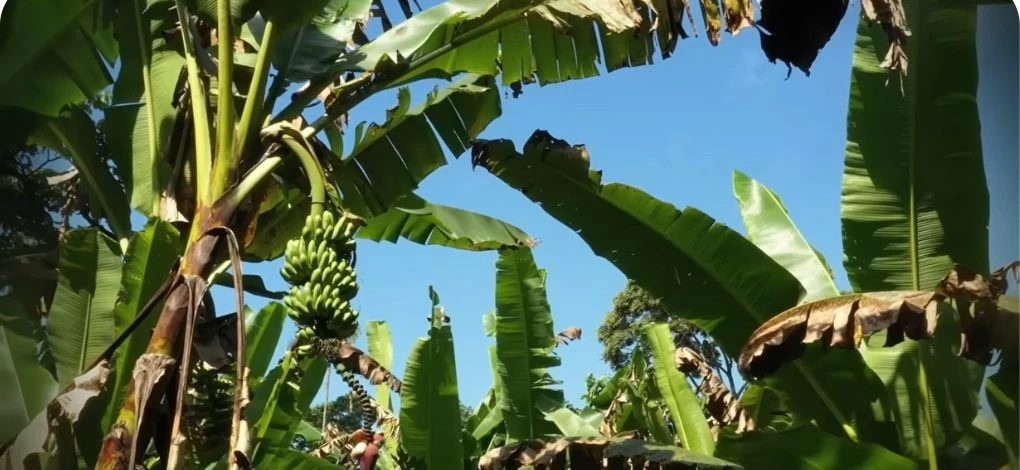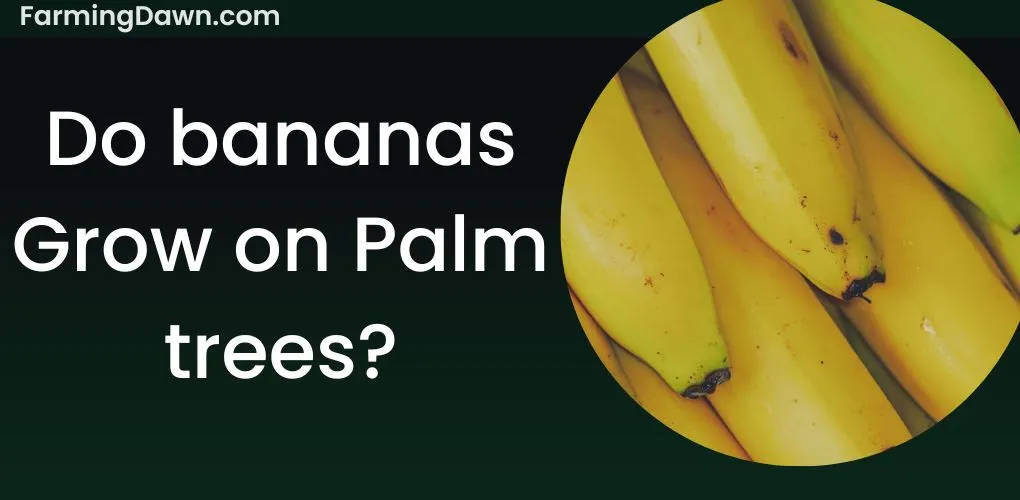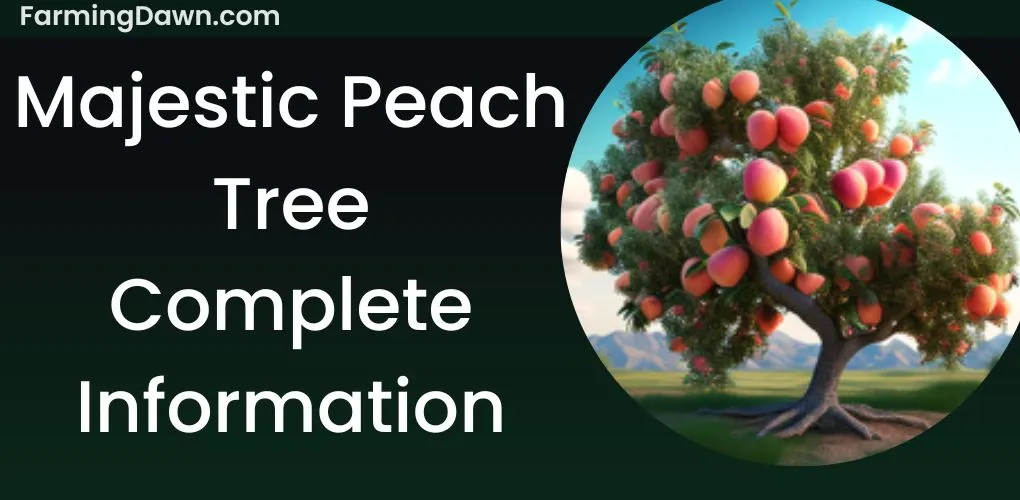One of the fruits that is most frequently consumed globally, bananas are loved by people of all ages and nationalities. Nevertheless, despite its widespread ingestion, this fruit continues to raise many issues for many individuals. Do bananas grow on palm trees? is one of the most often-asked questions.
Today, I will reveal the answer to this question and discuss some fascinating facts about bananas and palm trees as they grow.
Do Bananas Grow On Palm Trees?
No, bananas do not grow on traditional palm trees. Palm trees are a diverse group of plants that include coconut palms, date palms, and fan palms, among others. Although certain palm trees bear edible fruit, including dates or coconuts, they do not take bananas.
The misperception might have resulted from palm trees and banana plants having a similar appearance. People often mistake them for being the same plant since they both have long, emerald-green leaves and flourish in tropical climates. There are various causes of this misconception:
Influence of culture: Bananas and palm trees are frequently linked in some civilizations. For instance, we often see banana bunches adjacent to tall palm trees in many postcard shots or holiday photos, which can support the idea that they grow together.
Lack of knowledge: Many people are just not familiar with the biological characteristics of palm trees or banana plants. They might believe that bananas grow on palm trees since they are unaware of the distinctions between them.
Media misrepresentation: Some media outlets may contribute to this fallacy by presenting pictures of banana plants with palm trees in the backdrop or failing to correct them when it is misreported.
Language ambiguity: Some languages fail to distinguish between certain tree species, which causes confusion between bananas and palm trees. The issue is further muddied by the fact that in Spanish, for instance, the word “palma” can refer to palm trees and banana plants.
Is a banana tree a palm tree?
Bananas are herbaceous plants that belong to the Musaceae family and are not trees. Banana plants have a soft, fleshy stem consisting of overlapping leaf sheaths, unlike palm trees, which have a woody trunk with a distinctive ring pattern. Banana plants also have leaves that are wider and larger than those of most palm trees.
The fruits of these two plants also differ significantly from one another. While palm trees produce hard, woody fruits that are rarely eaten by humans, bananas are soft, edible fruits that are widely devoured.
The palm tree that looks like banana leaves-with image
This tree, known as the banana palm or the banana-leaved palm, is an exotic and visually stunning addition to any garden or landscape. This palm tree can reach a height of 20 feet and has a long, slender trunk and brilliant green, elongated leaves that resemble a banana plant.

Although the banana palm doesn’t yield any bananas, everyone who appreciates nature will be impressed by its distinctive appearance.
Difference between Banana trees and Palm trees
They may have some characteristics in common, such as their tall stature and big leaves. Still, they also differ significantly from one another.
Physical Differences: Banana plants and palm trees have quite different physical characteristics. The tall, strong stem of a banana tree is coated with overlapping leaf sheaths and is often green in color. In contrast, palm trees have a thin, typically brown or grey stem, and their leaves develop in the shape of a fan.
Fruit Production: Banana plants produce a type of fruit called a banana, which is consumed worldwide. Contrarily, palm trees yield a wide range of fruits, including dates, acai berries, and coconuts.
Growth: Banana plants have a reputation for growing quickly, with some varieties reaching heights of up to 3 feet weekly. Palm trees, on the other hand, often develop more slowly; some species need many years to mature fully.
Maintenance: Compared to palm trees, banana trees require more maintenance. For them to flourish, constant trimming, fertilization, and watering are necessary. On the other hand, palm trees have typically low upkeep requirements.
Similarities between Banana trees and Palm trees
Climate: Warm, tropical temperatures are ideal for palm and banana tree growth. To develop and thrive, they need a lot of sunlight and warm temperatures.
Height: Both plants are tall, with some species having a 100-foot maximum size. They are great plants for natural shade in outdoor areas because of their height.
Large Leaves: Banana and palm trees have large, fan-shaped leaves that give the environment a lush, tropical appearance. Additionally, their leaves offer good sun protection, which is crucial in tropical areas.
Do Bananas grow on palm trees? Video Explanation
What does Banana grow on?
Bananas are produced by enormous Musaceae-family herbaceous plants, which include around 70 species of plants. The most commonly cultivated species of banana is the Cavendish banana, which is the type you’re likely most familiar with. These plants, sometimes called banana plants, are indigenous to Southeast Asia’s tropical climates.
Since banana plants can grow up to 30 feet tall, they are frequently mistaken for trees. However, they do not have a woody stem like a tree. A banana plant’s stem is made of layers of closely stacked leaves. The fruit develops on the stem, which is also known as a pseudostem.
The fruit of a banana plant is technically a berry and is referred to as a banana. Several banana clusters, each containing up to 200 individual bananas, can be produced by a single banana plant. The bananas themselves develop in a spiral pattern, with each banana growing from a single blossom.
Do bananas grow on trees or bushes?
No, bananas do not grow on trees and bushes. This is due to the absence of a woody stem or trunk that lasts for many years. Instead, when the plant has produced fruit, the pseudostem of the banana plant dies back, and the following year a new one emerges from the roots. This means banana plants are technically perennial herbs rather than trees or bushes.
Do banana palms grow bananas?
Banana palms usually referred to as banana trees, are a common perennial plant species in tropical areas all over the world. The answer to your question is yes, banana palms do produce banana fruits.
The banana palm’s fruit develops in massive clusters called hands, each of which can have dozens or hundreds of individual fruits. Banana palms are susceptible to environmental factors and often take nine to twelve months to produce fruit.
It’s critical to provide banana trees with lots of sunlight, water, and nutrients to develop into strong, fruitful plants. To thrive, they also need frequent fertilizing and soil that drains well.
What Plants look like Banana trees?
Plants that look like a banana plant include:
- Plantain
- Canna lily
- Bird of Paradise
- Red banana
- Abyssinian banana
- Japanese fiber banana
- Golden lotus banana
- Pink velvet banana
- Blood banana
- Dwarf banana
How to Plant a banana tree
Banana trees can be grown in the following ways:
Choose the appropriate variety: Each type of banana tree has specific requirements for growth. Others can survive in peaceful settings, while some are better suited to tropical ones. It’s crucial to pick a variety that suits your growth circumstances, such as the type of soil, the climate, and the water availability.
Provide adequate Sunlight: Enough sunlight should be available for banana trees to thrive and bear fruit. They should be planted at a location that gets at least 6-7 hours of sunlight each day. Consider placing your banana trees in a spot with some partial shade if you reside in an area with scorching, intense sunlight.
Soil preparation: Banana trees need organically rich, well-draining soil. The ideal soil pH range for banana trees is between 5.5 and 7.0. Consider adding compost or other organic materials to heavy or clayey soil to increase drainage and aeration.
Regular Watering: Banana trees need to be regularly watered, particularly during the growing season. They are vulnerable to waterlogging yet prefer regularly moist soil. Water your banana trees deeply twice or thrice a week, depending on the forecast.
Fertilization: Banana trees need to be fertilized frequently in order to bear fruit. Use a moderate fertilizer during the planting season and apply it every six weeks. Add organic material, such as compost or horse manure, to your banana trees.
Pruning: To encourage healthy growth and fruit production, prune your banana trees regularly. Get rid of any damaged leaves, along with upright stems that emerge at the plant’s base. Just the main stem and a few vigorous side shoots should remain.
Do bananas grow on palm trees? Conclusion
The summary of your question do bananas grow on palm trees? is a resounding No. While bananas do grow on banana palms and have a unique growing habitat, they do not grow on a palm tree. I hope that the details I offered were useful. If you have any other queries, you can ask me in the comments. Thank you!
Each fruit grows on its tree and has unique characteristics. Read my other articles to learn more:





